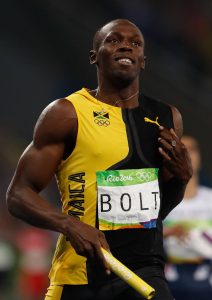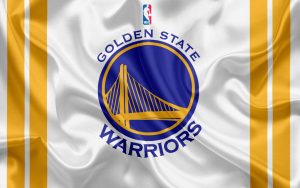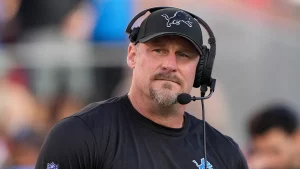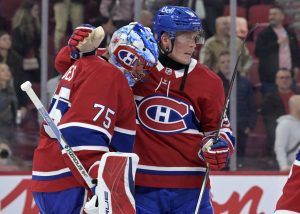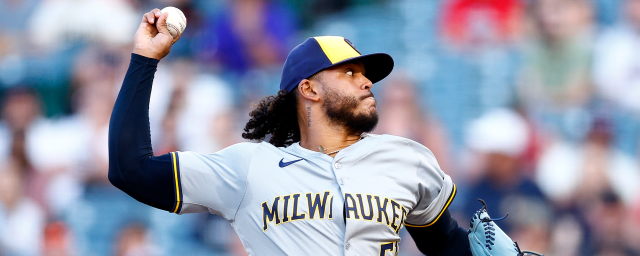
What Did the Brewers Learn From the Josh Hader Trade?
Looking back on the package the Milwaukee Brewers received for Josh Hader, was it enough to overcome the poor timing of the infamous trade?
If the Milwaukee Brewers could do it all over again, would they still deal Josh Hader at the 2022 trade deadline? It’s a fascinating question.
Nearly two years after the trade, the package the Brewers received for Hader has evolved in a very interesting way. Some of the players involved in the return contributed very little value to the organization, while others are starting to make a significant impact at the big league level.
Finally, we can’t ignore the trade that came after the Hader trade, which took one of the headlining pieces of the first deal and parlayed it into All-Star catcher William Contreras.
Still, it’s worth questioning whether the return was substantial enough to overcome the subpar timing of the transaction. By trading Hader when they did, the Brewers went from in the driver’s seat in the NL Central to out of the playoff mix entirely come season’s end. However, in the grand scheme of things, you would probably trade one playoff run for many more for years to come.
While the book is far from closed on the Hader trade, let’s take a look back and see if the optics surrounding the deal have changed now that the trade has had some time to mature.
A Controversial Trade
When the calendar flipped to August 2022, the Brewers held a three-game lead in the National League Central. Milwaukee boasted one of the top pitching staffs in the National League to that point, and they appeared ready to compete for a division title. They were expected to bring in a bat to help round out the offense in an attempt to make a deep postseason run.
However, on August 1, the Brewers shocked the baseball world. Instead of becoming buyers, Milwaukee sent four-time All-Star closer Josh Hader to San Diego. In exchange, the Brewers received veteran arms Taylor Rogers and Dinelson Lamet, along with prospects Esteury Ruiz and Robert Gasser.
Now, it wasn’t so much the package itself that caused confusion. Instead, it was the timing of the trade that left fans perplexed. How could a first-place ball club trade away one of its most valuable assets while in the midst of a race for the division title? To this day, it’s a question worth asking.
However, the Brewers wanted to maximize the return on Hader. With 1.5 years of team control remaining on his contract, when the Brewers received a package that they deemed reasonable, they took advantage of the offer.
The Major Leaguers
While the major league talent that Milwaukee got in return from San Diego wasn’t earth-shattering, you could see the appeal in the pieces.
Rogers was an efficient lefty who brought some valuable experience to the bullpen. While he was sporting a subpar 4.35 ERA at the time of the trade, he had already racked up 28 saves on the season to that point, which was the second-most in all of baseball, one behind Hader’s 29 saves.
While it was going to be extremely difficult to replace Hader one-for-one out of the bullpen, the Brewers thought Rogers could soften the blow of the trade and be a viable high-leverage arm, or even a potential closer option for the remainder of the season.
Brewers fans were very intrigued by Lamet at the time as well.
The then 27-year-old struggled mightily in his 13 appearances out of the bullpen for the Padres in 2022, rocking an ERA over nine and a WHIP over two. However, he was just a season removed from finishing fourth in National League Cy Young voting in 2020, when he finished the year with a 2.09 ERA, a 2.48 FIP, and 12.13 strikeouts-per-nine as a starter for San Diego.
A throw-in piece from the Padres, Lamet was viewed as an intriguing low-risk, high-reward investment. The Brewers were one of the top organizations at developing arms and getting the most out of their talent, and Lamet was expected to be another project for their pitching lab.
The Prospects
More significantly for the Brewers, the prospects they received had a lot of promise.
Outfielder Esteury Ruiz was one of the fastest players in the minor leagues, and his stock was quickly rising with his improved performance at the plate. He was demonstrating an enhanced approach with each promotion in the minors, and there was no doubt he could make an impact with his legs.
Ruiz was one of the most prolific base stealers in minor league baseball, swiping 119 bags in his three seasons from 2018-’21 across three minor league levels. Then, in 2022, Ruiz stole 37 bases in 49 games with Double-A San Antonio and 23 bases in 28 games with Triple-A El Paso.
On top of his activity on the base paths, Ruiz’s bat was rounding into form. Ruiz slashed .344/.476/.611 in Double-A in 2022. Following his promotion to Triple-A that season, Ruiz managed to hit .315 while getting on base at a .474 clip prior to being traded to Milwaukee.
Lefty Robert Gasser was San Diego’s seventh-ranked prospect at the time (per MLB Pipeline), and he was widely considered the most intriguing part of the deal. He was sporting a suboptimal 4.18 ERA in 18 starts in High-A in 2022, but there was a lot to like about his arsenal and his development as a pitcher to that point.
After striking out over 30% of batters with High-A Fort Wayne in 2022, the Brewers promptly promoted Gasser to Double-A upon his arrival. While there may have been some work to do before he was deemed big league ready, he had the upside of becoming a strong middle-of-the-rotation starter in Milwaukee.
Two years Later
In what was an incredibly puzzling decision, Dinelson Lamet was designated for assignment just two days after the trade occurred. Viewed as a strong flier option in the moment, Lamet was never even given the opportunity to make an impact in a Brewers uniform.
He was claimed by the Colorado Rockies, where he put up a 4.05 ERA and a 1.20 WHIP over the remainder of the 2022 season.
Taylor Rogers struggled to make an impact with his new club as well. He allowed five earned runs in his first four appearances as a Brewer, and things didn’t improve from there. He ended his Brewers tenure with a 5.48 ERA and a WHIP of 1.30 across 23 innings of work, and the Brewers let him walk at the end of the 2022 season.
While the Brewers made the trade based on the promise of the young talent in the package, it was still an incredibly disappointing major league return for a player of Hader’s caliber.
In the most idealistic outcome of the Hader trade, the Brewers would have been able to collect a return on Hader, while Rogers filled his place in the closer’s role without skipping a beat.
With Devin Williams in place as well, it was feasible that the Brewers could have still made a run without Hader. That is just not how it played out.
Checking In on the Prospects
As disappointing as the major league return was, the pair of prospects the Brewers received in the deal have been paying dividends, but in very different ways.
Robert Gasser
Gasser’s stock has continued to rise since joining the Crew. After turning in a successful 2023 campaign with Triple-A Nashville, Gasser earned Milwaukee’s Minor League Pitcher of the Year honors. More recently, he cracked Just Baseball’s Top 100 Prospects update, checking in at No. 98 on the list.
After several seasons of producing in the minor leagues, Gasser finally made his MLB debut back on May 10, and his brief performance in the rotation has been vital to Milwaukee’s success this season. Pitching to the tune of a 2.57 ERA to go with a 1.04 WHIP, Gasser walked just one batter in his 28 innings of work.
On top of posting a walk rate under one percent, Gasser eluded barrels at an elite rate, doing an impressive job at pitching to soft contact.
While it’s a small sample size, the southpaw sported a barrel rate of just 2.1% and a hard-hit rate of only 24.5% in his five turns through the rotation. He looks like he belongs in the majors, and he’s seemingly going to be a very important piece of Milwaukee’s starting rotation moving forward.
Unfortunately, Gasser hit the injured list on June 5 with a flexor strain in his throwing arm. After seeking three opinions on how to proceed with the injury, it’s looking like Gasser’s 2024 campaign is in jeopardy. While it’s obviously a brutal blow for both him and the club, his performance in the majors thus far could be an exciting indication of what lies ahead for the promising young arm.
Esteury Ruiz
In the end, Esteury Ruiz didn’t get much run in a Brewers uniform. He played just three games in September of 2022 before getting sent back down to Triple-A, and that was the extent of his Brewers tenure.
Milwaukee had a surplus of outfield prospects who were on the cusp of taking over at the major league level, and Ruiz was the odd man out in the group.
However, the Brewers seized an opportunity to capitalize on his value. Ruiz himself might not have had the most direct impact on the Brewers, but he was an integral piece of an offseason trade that had enormous repercussions for Milwaukee’s future.
In December of 2022, the Brewers emerged as trade partners in a blockbuster three-team deal that sent Ruiz to the Oakland Athletics. In exchange, the Brewers received reliever Joel Payamps from the A’s and backstop William Contreras from the Atlanta Braves.
It’s easy to say in hindsight, but the trade was a complete heist for the Brewers. Not only has Contreras evolved into the Brewers’ most valuable offensive weapon, but he has developed into arguably the best catcher in Major League Baseball as well.
What’s more, Payamps has emerged as an essential arm in the bullpen and has been one of the team’s go-to relievers in high-leverage situations since he joined the club.
It’s a fascinating wrinkle in the evaluation of the Josh Hader trade. Had Milwaukee not moved Ruiz, the package would have received much more scrutiny. Instead, the Brewers flipped Ruiz into a player who has become a franchise cornerstone in William Contreras, and the return for Hader is viewed in a completely different light because of that move.
The Brewers Are Making Out Well in the Long Run, But at What Cost?
Did David Stearns and co. underestimate the impact of losing a player like Josh Hader? It’s a valid question.
The Brewers went into the 2022 trade deadline sitting 12 games above .500 with a record of 57-45. However, from August 2 through the end of the season, they went 29-31 and missed the playoffs for the first time since 2017.
It ended their streak of four consecutive postseason appearances, and the club’s late-season spiral left a bitter taste in the mouths of Milwaukee’s players and fans.
When the Brewers traded away Hader, they sacrificed short-term success in order to bolster the farm system. While it’s a recipe that has worked for them in recent years, the optics behind the move were far from ideal, especially for a club that was in first place in the division at the time.
With that being said, at the end of the day, the Brewers received a young arm who has the upside of becoming an impact starter in Robert Gasser. He has a great shot at sticking in the starting rotation moving forward, and he finally got the opportunity to flash his intriguing potential at the big league level this season.
Moreover, the Brewers cashed in on Esteury Ruiz and were able to trade from a surplus of outfield prospects. In return, they received William Contreras, who has evolved into a potential MVP candidate and Milwaukee’s most productive offensive player.
The significance of that is not lost, especially for one of the smallest markets in Major League Baseball. Sometimes, the front office of a small market team needs to make difficult decisions in an attempt to achieve prolonged success, and that’s exactly what the Brewers did here.
Regardless of whether the package was enough, and regardless of whether the timing of the deal was optimal, the Brewers made the move with the future in mind, and they hope to be reaping the benefits of the trade for years to come.
Did The Brewers Learn Anything from the Hader Trade?
When it comes to Milwaukee’s front office and the team’s strategy moving forward, there is always going to be a give-and-take that comes with being in a small market. The Brewers hope to be a constant force in the NL Central, but they also need to make sure they take advantage of their star players when they have a chance to deal them.
That internal conflict presented itself again during this past offseason, when the Brewers had a decision to make with their ace and former Cy Young, Corbin Burnes. They could have held onto Burnes, seen where they were in the race, and then potentially flipped him at the deadline.
With that said, by pulling the trigger during the offseason, the Brewers were able to reshape their roster and ensure that they got trade value from their best asset without running the risk of alienating their fan base or their clubhouse at the deadline.
The results have been great so far, as the Brewers have hit the ground running this year, with Joey Ortiz (a prospect received in the Burnes trade) playing a big part in the team’s success. Ortiz has primarily played third base, where he has been a plus defender, but he could become the Brewers’ starting shortstop next year.
Currently, the shortstop position is being played by the incumbent Willy Adames, but the 28-year-old is set to hit free agency after this season.
There had been some speculation that Adames could be dealt at this year’s deadline, but considering his importance to the club as a leader, and considering that the Brewers hold a commanding lead in the NL Central, it is unlikely they would pull the trigger on a deal.
This all goes back to the Hader trade and the lessons the franchise took from it. While it is important to assess the market for your All-Star players before they hit free agency, timing is everything.
With Burnes, the Brewers knew that receiving a comp pick was not nearly enough value for a perennial Cy Young candidate, so taking him into the season carried too much risk.
He could have gotten hurt, but moreover, if the Brewers were once again sitting in the driver’s seat in the NL Central with Burnes leading the way, it would be impossible to trade him at the deadline. The optics alone would be awful, and it would run the risk of cratering another playoff berth.
Now Willy Adames is another really good player that the Brewers could have traded this offseason, especially after acquiring Ortiz. The move would have made logical sense at the time, but it would have hurt their chances of contending this year.
The situation was different from that with Burnes, because Adames wasn’t nearly as valuable and he is a position player. Considering his durability, there was less risk to taking Adames into the season and seeing if he could build his value, or just win the Brewers a lot of baseball games.
Currently, Adames is doing the latter, hitting .240/.333/.430, with 12 home runs, 10 stolen bases and 52 RBIs. His 118 wRC+ is the highest it has been since 2021, and his 2.8 fWAR has nearly matched his 2023 total of 3.3. There is every chance Adames will be in Arlington for the All-Star game this year, which would be the first appearance of his career.
Now Adames is clearly more valuable than he was in the offseason, but the Brewers aren’t going to deal him and disrupt what they have going for them right now. Milwaukee is currently 44-30, 7.5 games ahead of the pack in the NL Central.
They will gladly take the remainder of Adames’ services for the 2024 season, and the comp pick that comes with him when he hits free agency and signs a deal greater than $50 million.
Asset management is key to building a sustainable winner, especially in a small market. When you look at how the Brewers have managed assets over the last three years, it is pretty clear they have one of the more adept front offices in the game today.


